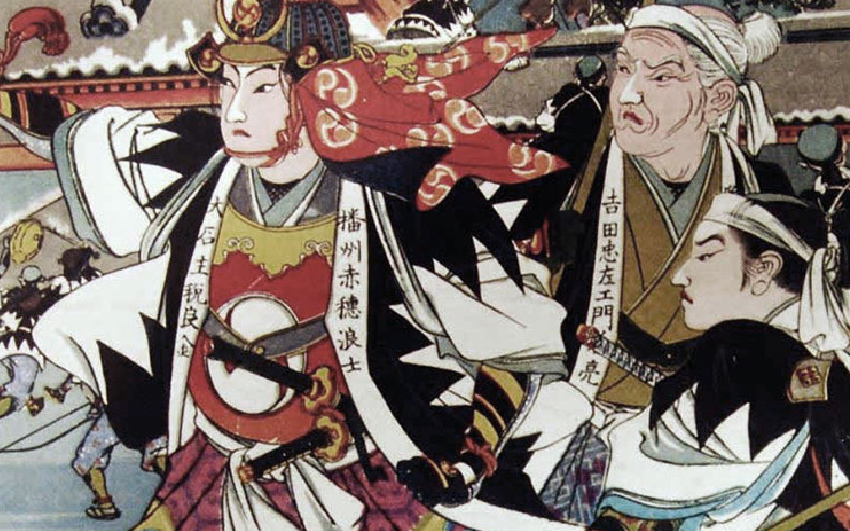Tale of the 47 Ronin – A True Story
A chronicle of love, honor and devotion.
The story of the 47 Ronin, known as Chushingura (“tale of the loyal retainers”) in Japanese, is one of the most famous Samurai tales in Japan. The fact that it’s a true story plays a significant role in its long-lasting appeal.
The story of the 47 Ronin is fascinating, and it’s actually one of my favorite Japanese tales. If you want to immerse yourself in this epic story, I would suggest you two movies: Kon Ichikawa’s 47 Ronin (my favorite) and Kunio Watanabe’s 1958 version . You’ll become a fan too!
Introduction
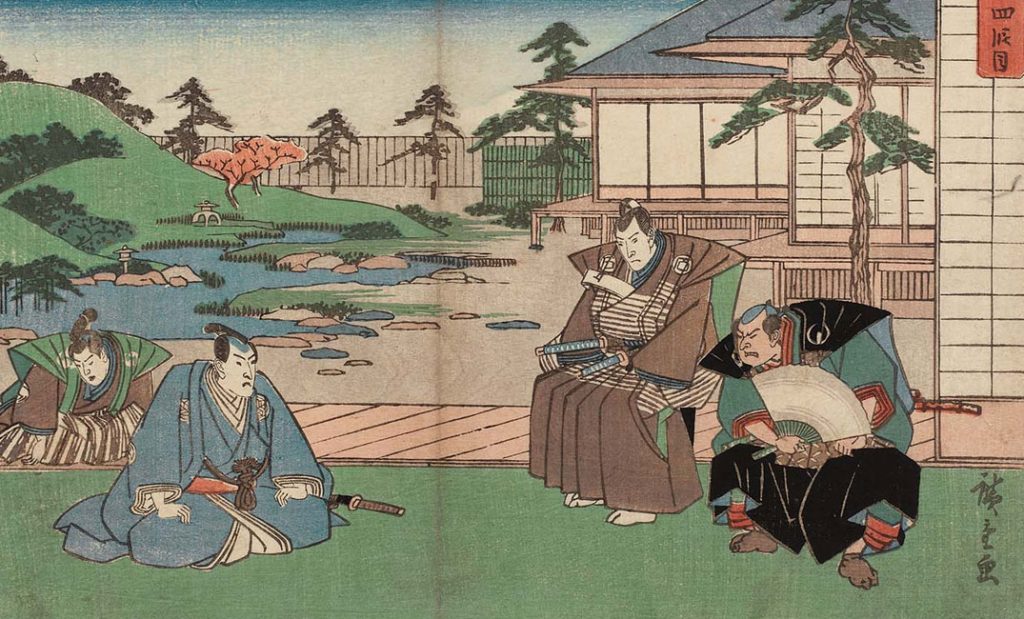
The story of the 47 Ronin, comes from the name of a Kabuki play created 50 years after the actual “Ako incident”.
Described by Japanese historians as a “National Legend”, the revenge of the 47 Ronin took place in Japan and is the ultimate expression of the samurai code of honor, Bushido.
The story began on April 21st, 1701, when lord Asano Naganori, the Daimyo of the Ako Domain was forced to commit ritual suicide for attacking Kira Yoshinaka, a rude and arrogant Master of Ceremony under the Tokugawa Shogunate.
The loyal 47 Ronin took over a year to planned their raid on Kira’s mansion. On a snowy December night, they strike on Kira’s home, taking everyone by surprise.
After killing Kira, they went to their Master’s Grave and turned themselves into the authorities. For committing such a vendetta, the 47 Ronin were requested by the Shogun to commit seppuku, ritual self-disembowelment.
During the Meiji era, the rapid modernization of Japan forces people to return to their cultural roots and values, giving tremendous popularity of the 47 Ronin’s tale.
Today in Japan, the 47 Ronin are regarded by the Japanese people as “Cultural Heroes”. They are honored in traditional holidays and countless Kabuki plays, movies, novels, and manga.
Every year, the Gishisai Festival takes place on December 14th in Ako city in Hyogo prefecture, in memory of the 47 Ronin. On that day, schools and businesses are closed, and the streets are decorated with banners and colored lanterns.
Additionally, each year, at Sengakuji Temple in Tokyo, thousands of tourists visit the resting place of the 47 Ronin and pay homage to their dedication to Bushido.
Understanding Bushido
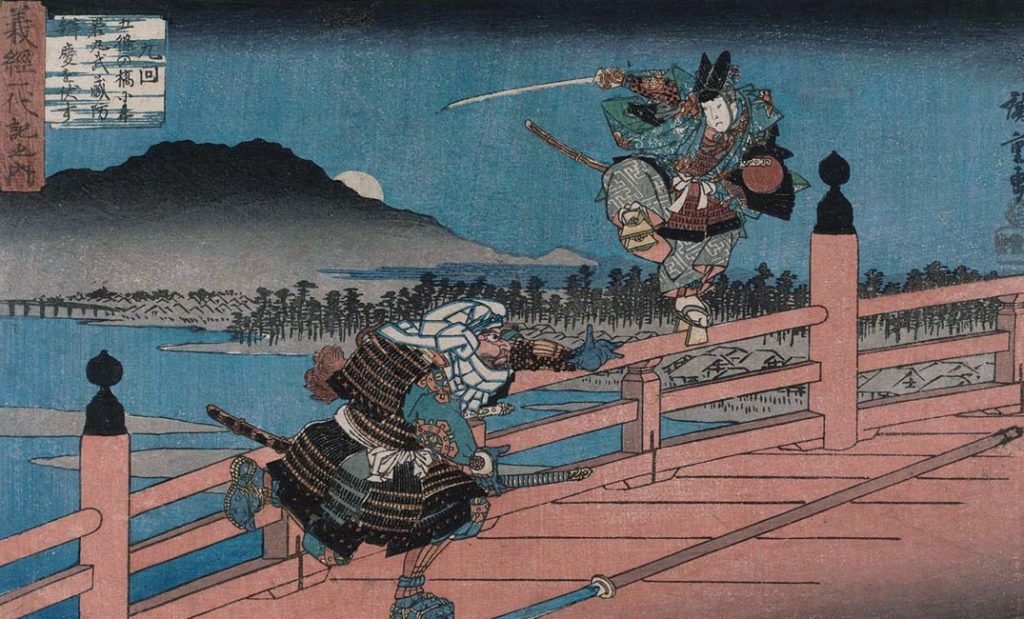
One of the essential things for westerners to fully appreciate the story of the 47 Ronin, is to understand the psychological, philosophical, and spiritual foundations of the warrior class in ancient Japan: Bushido.
In Feudal Japan, Samurai devoted their lives to Bushido, a strict, unwritten code of living, teaching moral principles and values like loyalty, courage, honor, and self-discipline.
Bushido found its origins in Zen Buddhism and Shinto and became the heart and soul of the Samurai in old Japan. Bushido asked the Samurai to be honest, reliable, and to live a frugal life with no interest in material possessions and money. Instead, they value duty, pride, honor, compassion, and putting the needs of others in front of their own are favored.
Samurai had a very intimate relationship with death and were taught to think about it continually. This stoic mental attitude added a deeper dimension to the Samurai’s life, allowing them to fully appreciate life and the things they enjoy and love the most.
According to the Bushido Shoshinshu written in the 17th century by Taira Shigesuke, a Samurai and military strategist of Edo period:
“As long as you keep death in mind at all times, you will fulfill the ways of loyalty and familial duty. You will also avoid myriad evils and calamities, you will be physically sound and healthy, and you will live a long life. What is more, your character will improve, and your virtue will grow. If people comfort their minds with the assumption that they will live a long time, something might happen, because they think they will have forever to do their work and look after their parents-they may fail to perform for their employers and also treat their parents thoughtlessly.But if you realize that the life that is here today is not certain on the morrow, then when you take your orders from your employer, and when you look in on your parents, you will have the sense that this may be the last time, so you cannot fail to become truly attentive to your employer and your parents. This is why I say you also fulfill the paths of loyalty and familial duty when you keep death in mind.“
According to Bushido, if a Samurai loses his honor, he could regain it by performing seppuku (mistakenly called ‘hara-kiri’) a form of ritual suicide.
Whether chosen by the Samurai itself or ordered as an honorable form of capital punishment, seppuku was preferred to a dishonorable death at the hands of an enemy. It was also a demonstration of the Samurai loyalty, courage, and honor. After the death of a Lord, loyal Samurai might show their affection and grief for their Master by performing seppuku.
Throughout history, Samurai committed seppuku as a radical act of protestation against injustice or to get their Lord to reconsider an unwise or unworthy action.
Today in Japan, Bushido no longer represents military power, but its foundation still has a significant influence on Japanese culture and society.
That can easily be observed when you see the strong sense of loyalty workers have toward their employers, students toward their teachers, and apprentices toward their Master.
Hundreds of years after its appearance, Bushido is still the core of Japanese social, political, and corporate structure.
Tragedy in Edo Castle
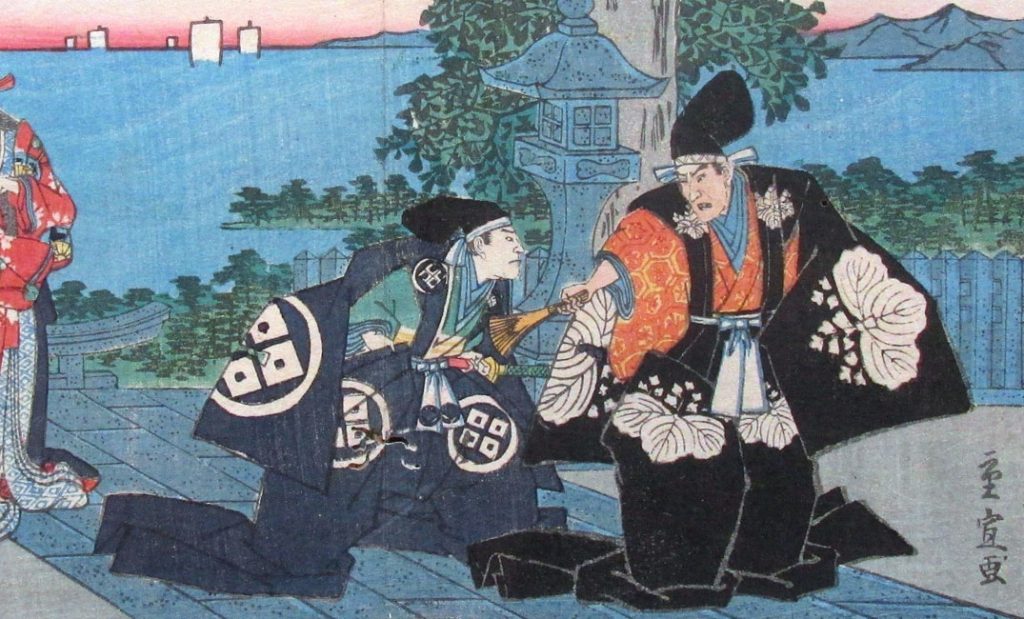
The tale of the 47 Ronin is a true story that began on April 21st, 1701, when lord Asano Naganori attacked Kira Yoshinaka, the senior Bakufu protocol official, in Edo Castle.
In 1701, Tokugawa Tsunayososhi, the ruling Shogun of Japan, ordered two Daimyo (lords), Asano Naganori, Lord of Akō and Kamei Sama, to organize a reception for the envoys of the Emperor in Edo, the ancient name of Tokyo.
Asano and Kamei were to be instructed in the necessary court etiquette by Kira Yoshinaka, a rude, arrogant and powerful master of ceremony in the hierarchy of Tokugawa Tsunayoshi’s shogunate.
Lord Kira was accustomed to receiving gifts of a substantial monetary nature for his teaching. Lord Asano’s contribution to Lord Kira was different, more personal. He sincerely offered high-quality dried bonito fish, a specialty from his hometown. He did not offer bribes to Kira as many officials do.
Kira was a greedy man a was insulted “by that dull gift” and treated the two men poorly during his teaching. During their instruction, Asano and Kamei were insulted continuously by Kira. At one point, Kamei-Sama became so enraged that he came close to kill Kira to avenge the insults. However, the Lord’s counselors suggested, in order to avoid disaster, to give Kira a large bribe. Soon after, Lord Kira started to treat Kamei Sama very nicely.
Kira continued to treat Lord Asano harshly, and humiliated him in public calling him a “country boy with no manners”. Asano lost his temper and could restrain himself no longer. He drew his wakizashi (forbidden inside Edo Castle) and attacked Kira but only wounded him slightly in the face before being stopped by guards.
Kira’s wound was superficial, but attacking a Shogun’s Official into Government building, was considered to be a grave offense. Any form of violence was expressly forbidden inside the Edo castle.
As a punishment for his severe offense, the Shogun Tsunayoshi ordered Lord Asano to commit seppuku (ritual suicide). Asano forfeited his life on the very same day. As for Kira, he received sympathy as he continued his official duties.
At the time, the law stated that when a Daimyo committed seppuku, the Shogun’s family is dishonored, his castle confiscated and his Samurai retainers disbanded, thus becoming Ronin or masterless Samurai.
As he heard the terrible news, Oishi Kuranosuke, Asano’s principal counselor, moved his Lord’s family away, before surrendering Ako castle to the Officials of the Tokugawa Government.
Oishi secretly formed a group to avenge their Master’s death. Out of 371 samurais, only loyal 47 men refused to allow lord Asano’s death to go unavenged, even though vendetta is strictly forbidden by law.
They decided to go on with their plan, even though they knew they would face capital punishment for doing so, swearing a secret blood oath to avenge their Master by killing Kira.
Preparing the Revenge
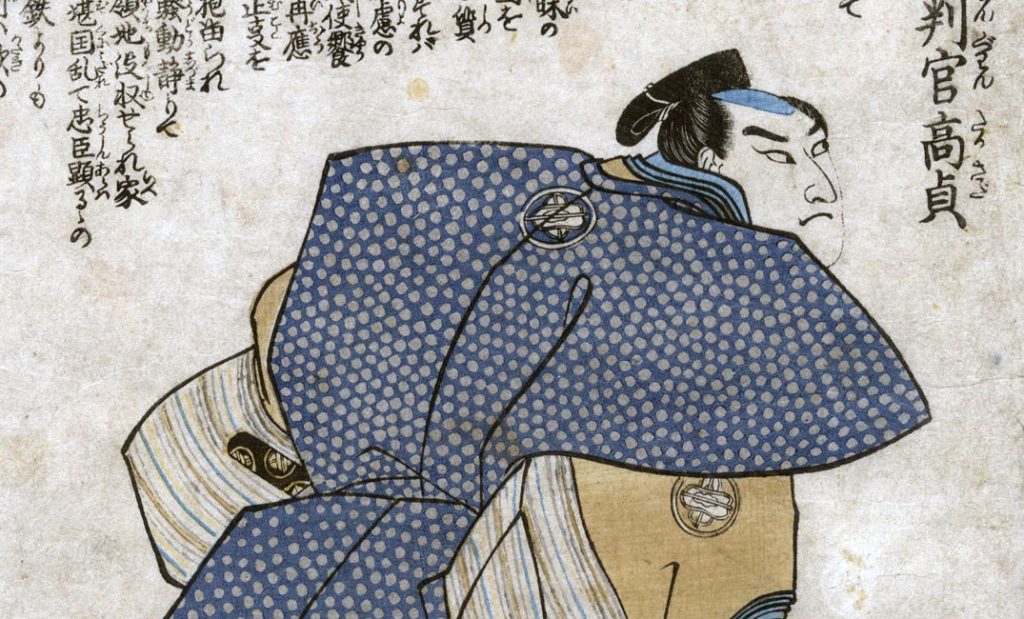
It was obvious in Kira’s mind that Asano’s Samurai would try to get revenge against him. To prevent an attack, his house had was fortified, and his personal security significantly augmented.
The 47 Ronin knew that before they could launch the attack, they would have to put Kira guard down. They decided to split up to avoid suspicion and to start to plan their move on the well-protected Kira. They gathered in and around Edo, disguised as monks, merchants, and even drunkards to get information on Kira to help them penetrate his mansion.
Only their mission matters; one of the Ronin even married the house builder’s daughter to get a hand on the plans of Kira’s mansion.
Others Ronin were secretly transported to Edo weapons as well as armor and equipment by boat during the night.
Oishi knew that by raiding on Kira’s mansion, the 47 Ronin were going to their death, not only they could die during the attack, but if they succeed, the Shogun will definitely want them dead. He went to his wife and divorced her without telling her anything about his plan. He sent her away to live with her parents, along with their two younger children. Oishi’s oldest boy, Chikara, decided to stay an fight alongside his father. He just sixteen years old.
Fearing a plot growing against him, Lord Kira sent spies to watch the Ronin, particularly their leader, Oishi. Their plan needed to remain secret.
Knowing that Kira sent spies after him, Oishi went to Kyoto and began frequenting brothels and taverns earning the reputation of a drunken gambler. This way, Oishi Kuranosuke was trying to deceive Kira’s spies, but on the inside, he was consumed by the idea of revenge.
Agents of Kira reported that the Asano’s retainers, now away from the warrior’s life, became merchants and drunkards. With time, Kira started to believe that Asano’s Ronin would not dare to avenge their Master and that he was safe from them. The masquerade worked just as planned, Kira let down his guard.
At a secret meeting, Oishi and the other Ronin decided that the time had come to raid against Kira mansion and avenge their Master’s death. The moment to strike is perfect.
The Attack
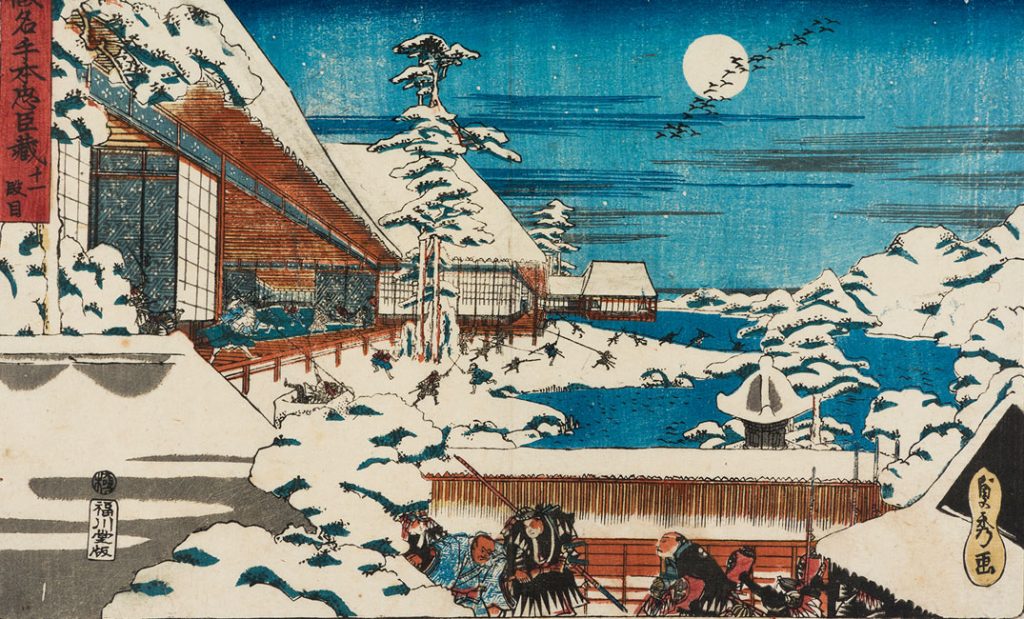
A year and a half after the death of Asano, the 47 Ronin meet in Edo at one of their secret locations, renewed their oaths and got ready to attack Kira’s mansion.
On the night of December 14th, 1702, snow was falling in Edo. Oishi inspected each man and questioned them all about their orders. They all put on their weapons and armor. Over it, they wore the uniforms of the fire brigade so that they could freely move through the streets of Edo.
On their way to Kira’s mansion, Oishi sent messages to the neighborhood, explaining that they were not thieves, but the 47 Ronin, came to avenge the death of their Lord. The neighbors all hated Kira and did nothing to stop the Ronin from attacking.
Armed with swords, lances, and bows, they split up into two groups to attack the house at the same time. Oishi Kuranosuke led one group by the front gate while Oishi Chikara, his son, led the second group to the back gate. As planned, a drum would sound the beginning of the attack, and a whistle would signal that Kira has been found.
A few archers quietly positioned themselves on the roof to prevent those in the house from sending for help. When everybody was in place, Oishi sounded the war drum, marking the beginning of the attack. The Ronin tears down the front and read gates with war hammers and penetrated the mansion while Kira was having a tea party.
The 47 Ronin spread throughout Kira’s mansion, fighting against more than 120 of Kira’s men, who, even taken entirely by surprise, put up fierce resistance.
Most of the Ronin were killed during the raid, many were wounded, and some ran away from the fight, including Kira’s son.
For some time they hunted for Kira, searching the house, finding nothing but women and children. Oishi checked Kira’s bed, and notice that it was still warm: Kira must not be far. They discovered under the bed a secret passageway leading to the garden. Some men took the passageway and finally found a man hiding in a storage hut. The sound of the whistle echoed in the night – Kira has been found.
The Death of Kira
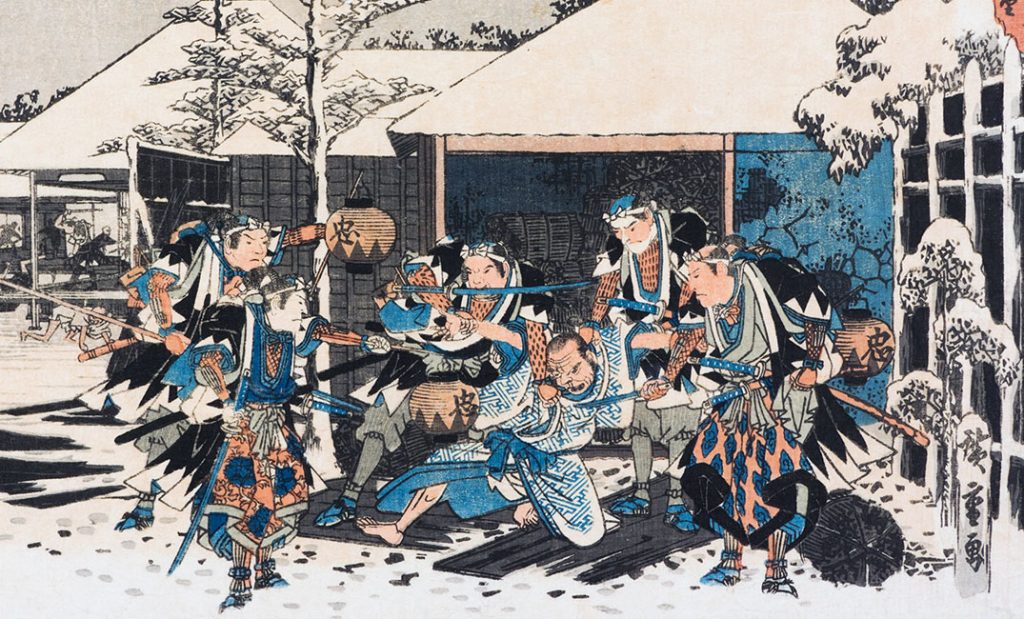
In the garden was held a small building for storing firewood and charcoal. While searching the building, the Ronin were attacked by a man hiding in a corner.
After being easily disarmed and questioned, the aggressor refused to state his name and rank. The searchers knew it was Kira, so they blew the whistle. The Ronin gathered around the man and Oishi Kuranosuke certified that it was indeed Kira, seeing the scar from Asano’s attack.
In consideration of Kira’s high rank, Oishi kneeled before him and respectfully told him they were retainers of Asano, come to avenge him as real Samurai should.
Oishi also told Kira that he would allow him to die with honor as a true Samurai, by committing seppuku, as Lord Asano had done almost two years ago. Oishi offered Kira the same dagger Asano used to kill himself. Kira fell on his knees, crying, trembling, begging for his life, offering money to Oishi and the Ronin so that they let him live.
After realizing that Kira does not have the courage nor the honor to commit Seppuku, Oishi killed him by cutting off his head with Asano’s dagger.
Kira’s head was wrapped in white cloth and placed in a bucket. Although a few Ronin were wounded, they marched to Sengaku-ji Temple in Edo where Lord Asano was buried.
On arriving at the temple, the Ronin washed and cleaned Kira’s decapitated head in a well and put it before Asano’s tomb. They offered prayers at the temple in homage to their Lord. Knowing what was coming for them, they gave all the remaining money of the Asano Clan to the head monk of the temple, asking him to bury them decently after their death.
Fully prepared to die for their action, Oishi sent a messenger to the Tokugawa Government Building in Edo, informing the officials of what had been done and telling them that they would be waiting at Sengaku-ji Temple, for the Shogun orders.
A Death Sentence
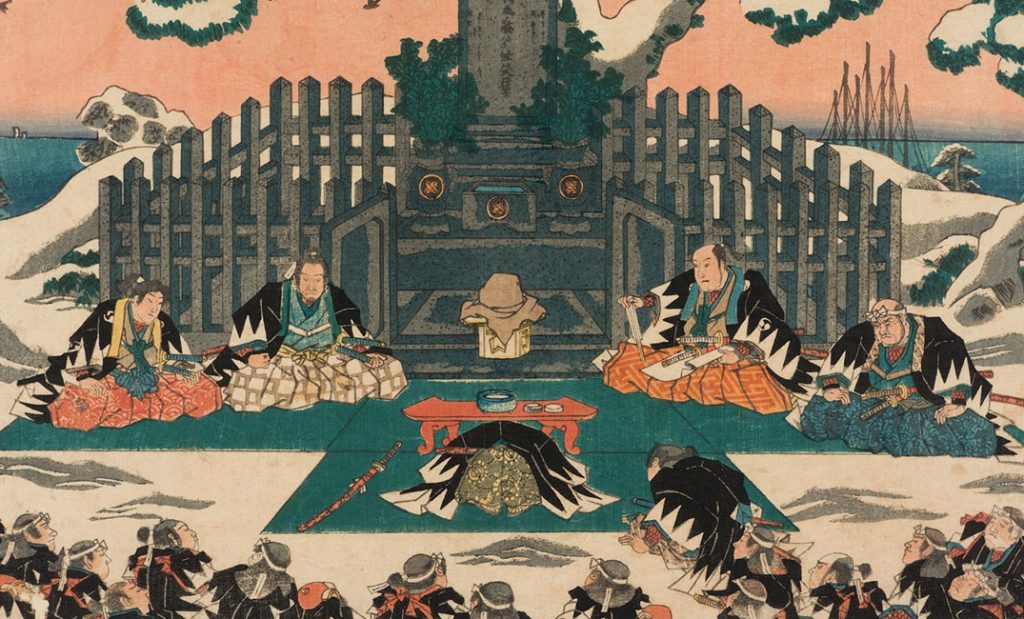
The very same night of the attack, by turning themselves in the temple, the Ronin knew that they were at the mercy of the Shogun, Tsunayoshi Tokugawa and that their faith will result in certain death.
The Ronin were detained, and treated with courtesy and respect, due to their Samurai status. The Tokugawa Shogun and his entourage were profoundly impressed by the Samurai Spirit demonstrated by the 47 Ronin.
The shogunate was troubled, deliberating for almost two months. By killing Kira and avenging the death of Asano, the Ronin followed the Way of Bushido, but they also acted against the authority and laws of the Shogun himself, who prohibited personal vendetta.
On February 4th, 1703, the 47 Ronin were divided into four groups and handed over to four different Daimyo, who were ordered to supervise and witness their deaths.
As they were expecting it, the 47 Ronin were sentenced to die honorably by committing seppuku, and not as vulgar criminals.
Oishi Kuranosuke and the valiant 47 Ronin bravely committed seppuku as they were commanded to do by the Shogun. They were buried side by side next to their Master, Lord Asano Naganori at Sengaku-ji Temple in Edo.
Today in Sengaku-ji Temple, you can still see well-preserved kimonos, weapons, armor, and drums that were used by the 47 Ronin during the attack against Kira’s mansion. You can also see their gravestones and the famous Kubi-Arai well (head washing well) they used to clean up Kira’s head on the night of the attack.
For the Japanese people, the tombs of the 47 Ronin became a place of great reverence and prayer and is visited each year by thousands of admirers. Visitors come to burn incense at their tomb and worship them as symbols of loyalty and true Samurai Spirit.
The Legend Lives On
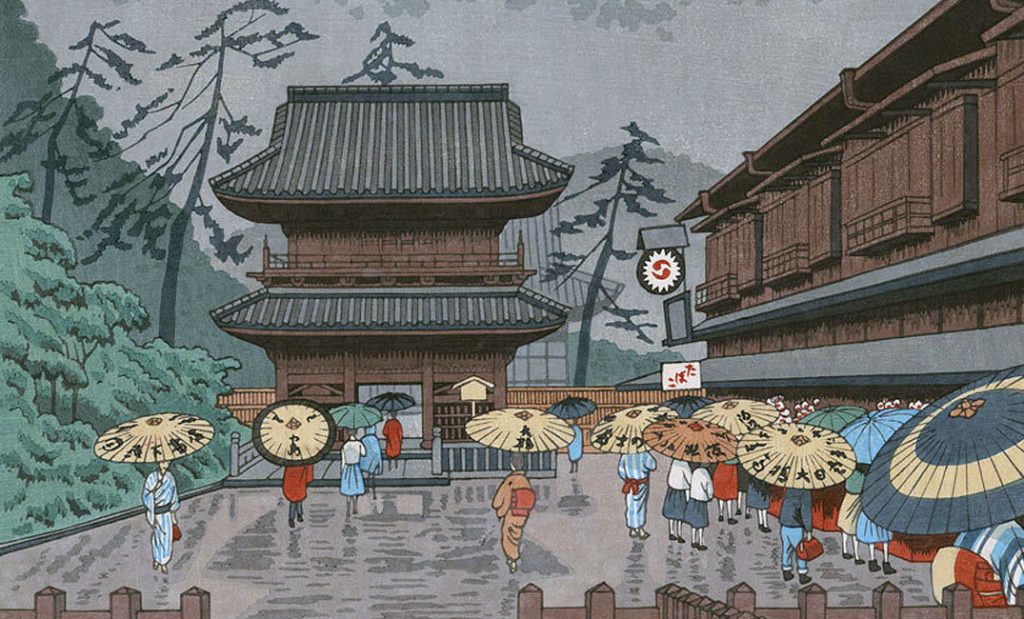
Even today, more than 300 years after the actual events, Chushingura – the story of the 47 Ronin is one of the most famous Japanese historical stories. It’s a story that every Japanese person knows about, regardless of their age or education level.
For centuries, the story of the 47 Ronin has been transmitted from generation to generation and illustrates the heart and soul of Japanese society.
In its long and tumultuous history, Japan had many epic stories of love, tragedy, and vengeance, but the story of the 47 Ronin stands out as the favorite one.
Their story is the purest expression of Bushido and represents the essence of the Samurai Spirit, demonstrating duty, loyalty, and the powerful bond that existed between a retainer and his Master. These values that embody the Samurai ideals or Samurai Spirit strikes close to the heart of the Japanese people.
The Tale of the 47 Ronin of Ako will never be forgotten, and like some Japanese people say “To know the story of the 47 Ronin is to know Japan“.
Conclusion
In closing, the tale of the 47 Ronin is not just a captivating narrative from Japanese history; it’s a profound lesson in honor, resilience, and martial virtues that resonates deeply with karate practitioners. This story exemplifies the Bushido code – the samurai moral values of loyalty, honor, and discipline, which are intrinsically linked to the philosophies underlying karate.
As karate practitioners, we are taught to uphold values such as respect, perseverance, and integrity. The 47 Ronin’s unwavering commitment to avenging their master, despite overwhelming odds, mirrors the steadfastness we aspire to in our martial arts journey. Their story teaches us that true strength lies not in physical prowess alone, but in the unwavering spirit and moral conviction.
Resources
If you want to know more about the 47 Ronin, let me suggest a list of my favorite books, graphic novels and films on the subject
Books, Manga & Novels
- 47 Ronin (book) by Thomas Harper.
- The 47 Ronin (graphic novel) by Sean Michael Wilson.
- The Revenge of the 47 Ronin (book) by Stephen Turnbull.
Films
- 47 Ronin by Kon Ichikawa.
- The Loyal 47 Ronin by Kunio Watanabe.
- 47 Ronin by Kenji Mizoguchi.
- 10 Ways Meditation can Improve Your Karate - March 6, 2024
- Is Tai Chi Effective for Self-Defense? - February 16, 2024
- Do You Need to Add Ground Grappling Into Your Karate? - February 15, 2024

